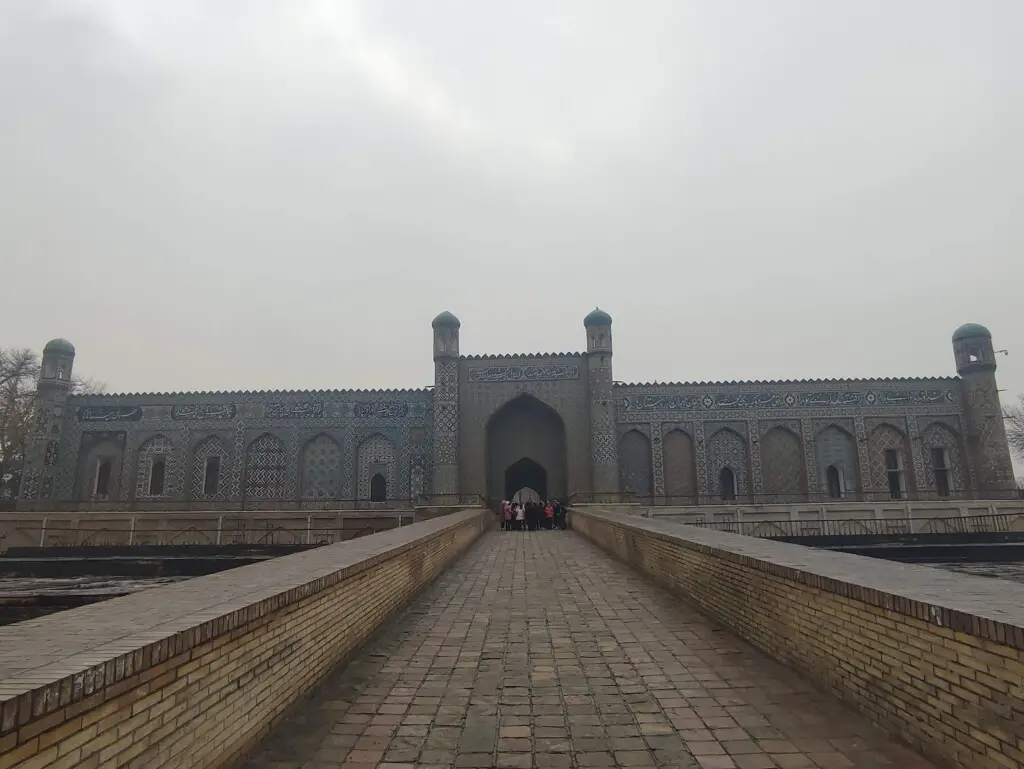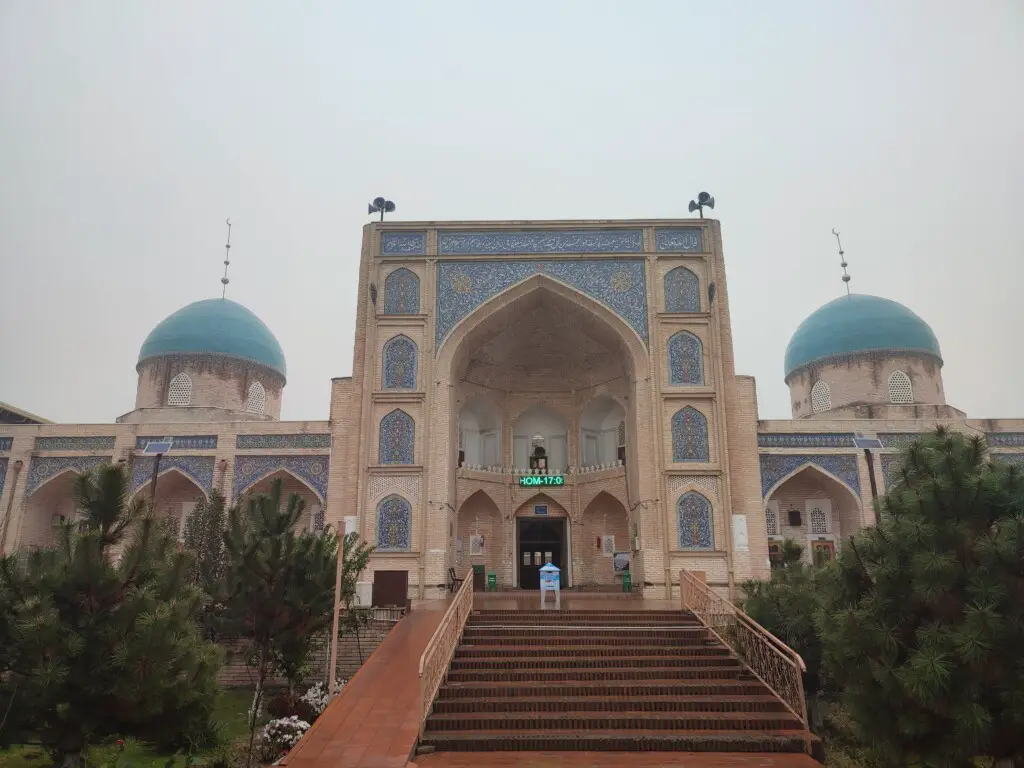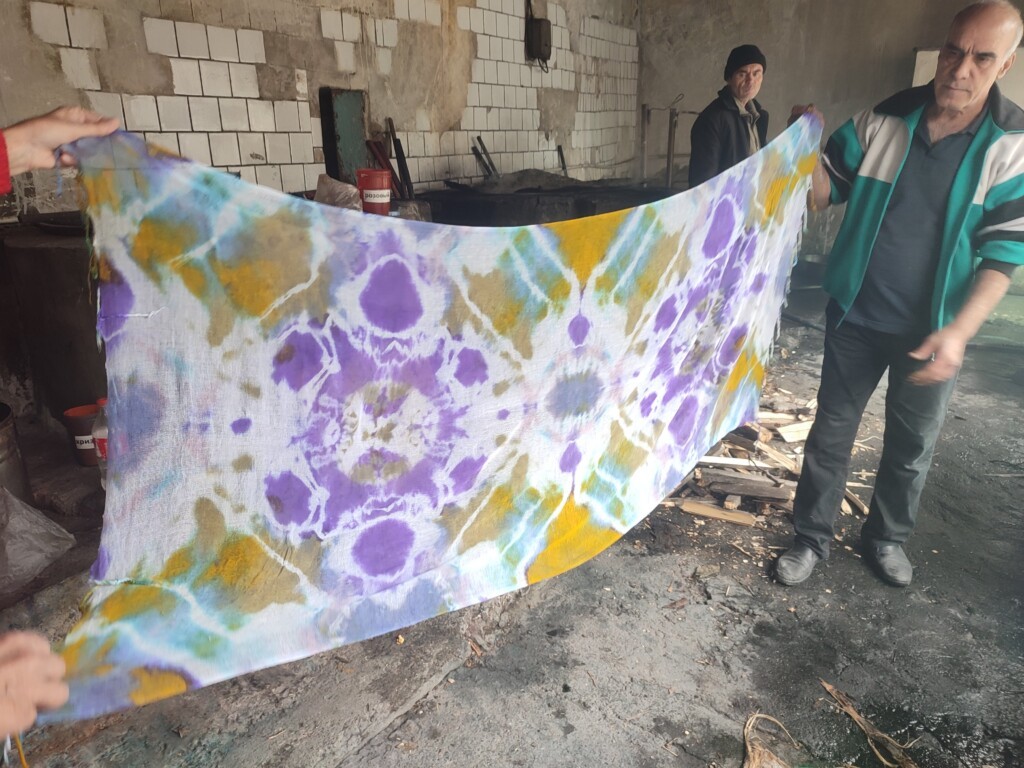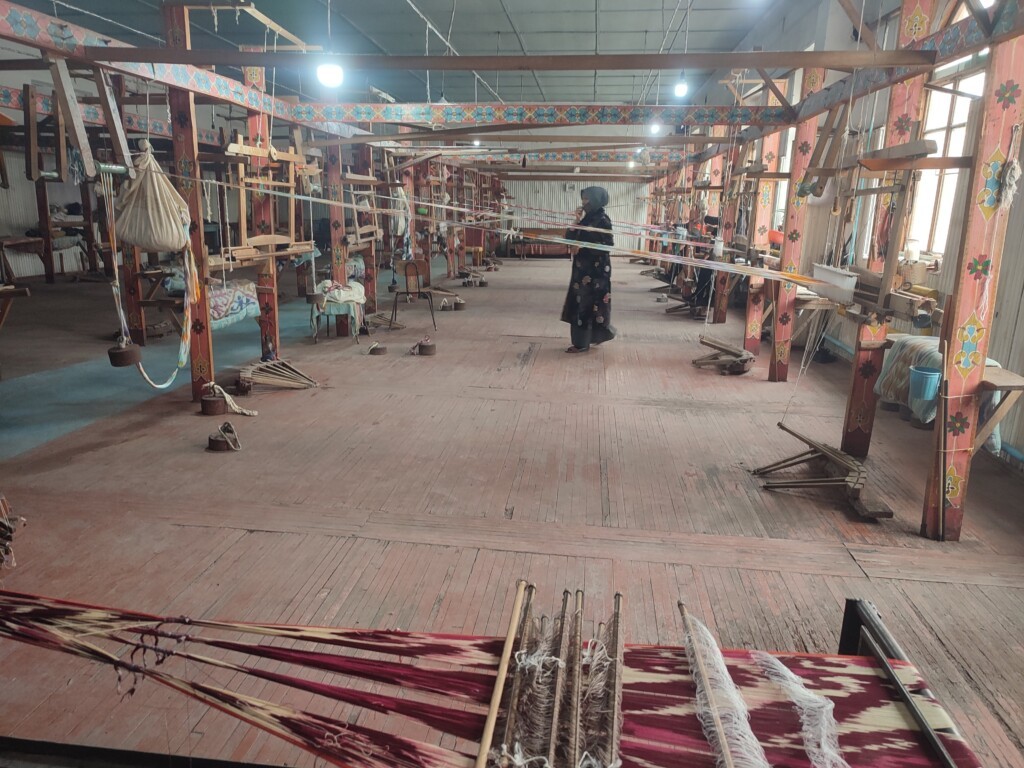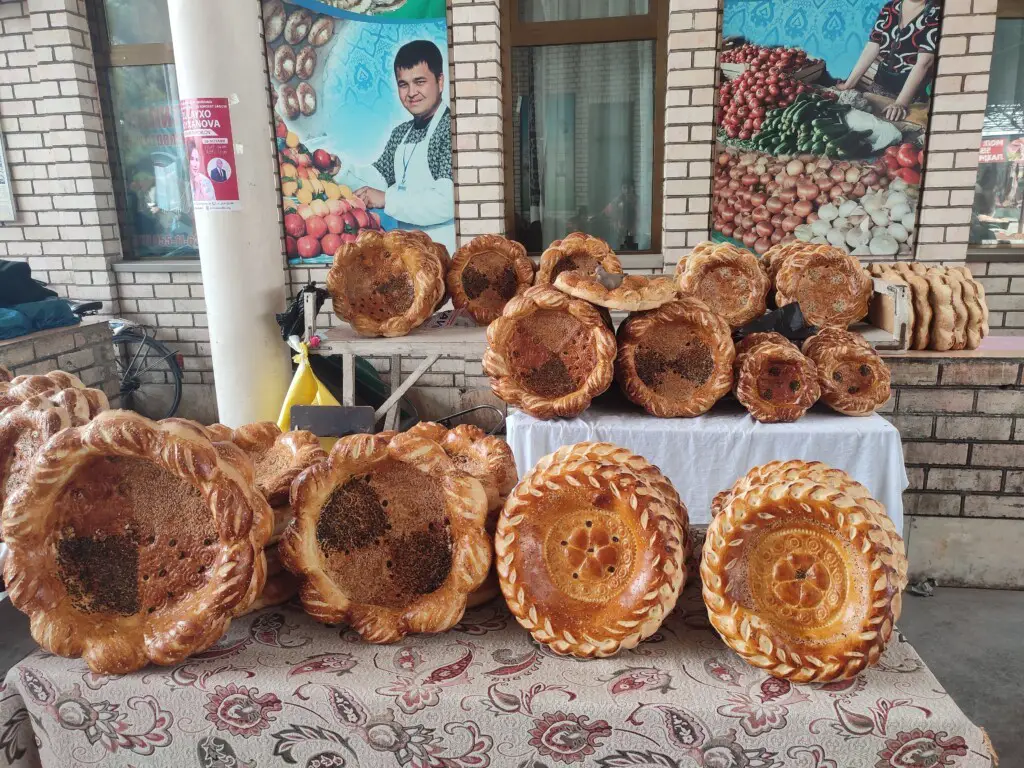The Fergana Valley of Uzbekistan: The Full Travel Guide
If you want to visit a place that screams “SILK ROAD” louder than any other, then don’t skip Fergana Valley.
While places like Samarkand, Bukhara, and Khiva draw in most tourists to Uzbekistan, the Fergana Valley, this 22,000 sq. km. salient in the east part of Uzbekistan, is an incredibly diverse region with a rich history and unique culture, making it an ideal destination for those seeking an authentic and immersive travel experience.
How to get there, the popular attractions and the best cities, my first-hand experience, where to stay and what to eat, here is all you need before you travel to the Fergana Valley in Uzbekistan.
Notable cities in the Uzbek Fergana Valley
The Fergana Valley doesn’t boast magnificent cities like Bukhara and Samarkand, but there are still a few worth visiting if I say so myself.
Here’s my curated list of cities you should visit in the Uzbekistan part of the Fergana Valley, ordered by how interesting they are to the average backpacker.
- Kokand: If you’re only visiting one city in the Valley, let it be Kokand. Steeped in history, it boasts a rich architectural heritage with its magnificent palaces, mosques, and madrasas. The city is known for its vibrant bazaars, showcasing local crafts and textiles.
- Namangan: a vibrant but conservative city. It has a rich history becoming the main religious center of the Fergana Valley in the 17th century. You will be able to see grand mosques (at one point over 600!), ancient mausoleums, and bustling markets showcasing an array of colorful textiles and traditional crafts.
- Margilan: The Silk City of the Silk Road. Margilan has been the center of silk production for centuries. Most of the silk you will undoubtedly see during your stay in Uzbekistan was manufactured in Margilan.
- Andijan: An ancient city with relatively new buildings. The Earthquake of 1902 destroyed pretty much everything, but the main Juma Mosque.
- Rishtan: Margilan is to silk what Rishtan is to clay. It’s the center of pottery production in Uzbekistan.
- Fergana: Yes, the city that gave the valley its name is last on my list. Fergana is a new city (founded in 1876 when the region was annexed by the Russians) and there aren’t any attractions worth visiting. Regardless, most people base themselves here to do day trips in the Valley due to its central position and good transport links.
Kokand
Kokand was once its own Khanate. Back in the 18th and 19th centuries was almost as big and as important as its neighboring Emirate of Bukhara. This fact is largely overlooked by tourists who skip Kokand and the Fergana Valley in favor of the cities in West Uzbekistan.
Things changed for Kokand in 1876 when the Russian Empire annexed the region. Kokand was no longer grand, no longer powerful, and no longer even an independent entity.
Half a century later, the Soviets put an emphasis on cotton production in Kokand. It became known (much like Manchester, UK in the 19th century) as Cottonopolis.
So what are some sites of these glorious times that remain in Kokand? Let’s see.
Palace of Khudayar Khan
The home of the last ruler of Kokand, this Pearl of Kokand is as marvelous, as the madrasahs in Bukhara. It was built in 1873, just 3 years before the Khan was toppled.
Its facade is intricately decorated and catches the eye like nothing else in the city. There are 114 rooms inside, although most are either empty now or closed to tourists (or probably both).
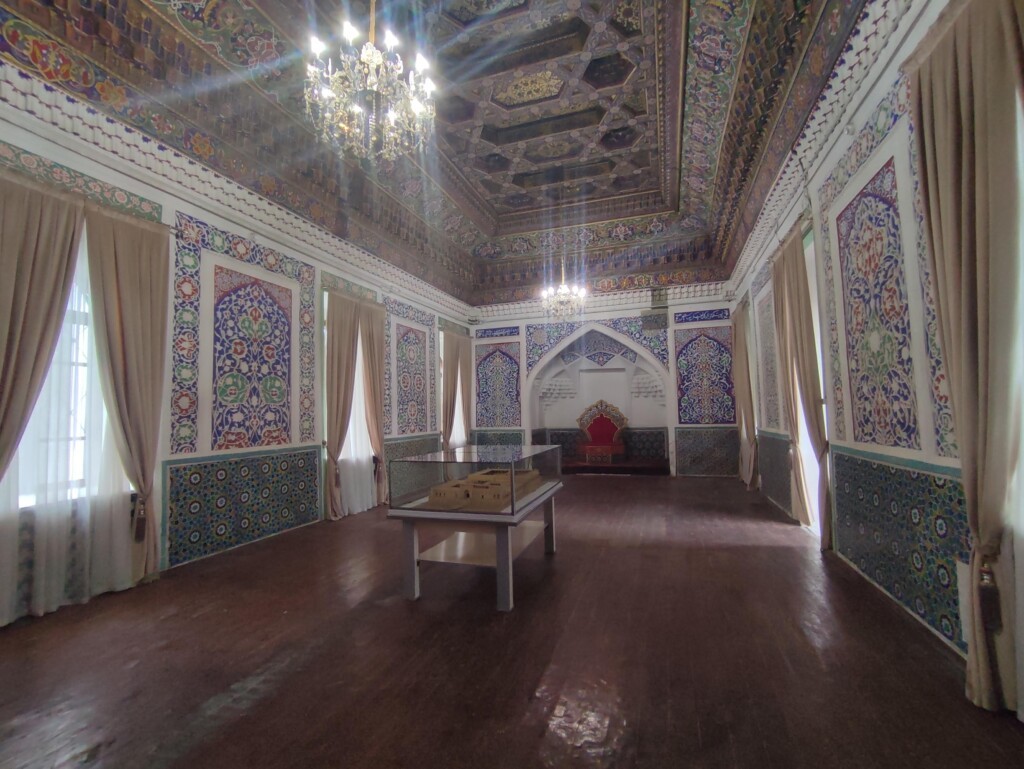
Entrance fee stands at 25000 UZS / 2 EUR and there’s a small museum inside. Worth.
Jome Mosque
I’ve seen all the spellings – Juma, Joma, Jami, Juma, Jameh. I’ll stick with Jome Mosque, as this is the spelling written on the plaque at the entrance.
Jome Mosque was built in 1812. To this day it’s the biggest mosque in Kokand. It houses the Museum of Applied Art and the entrance fee for both is 25000 UZS / 2 EUR.
Norbutabiy Mosque and Madrasah
Completed in 1799, this mosque is unique for a surprising reason. It’s one of the very few mosques that were open and operating during the Soviet regime.
The eight rooms in the main facade are for teachers of Arabic and the Quran. Only Muslim males may enter the inner courtyard. Women, Muslim and non-Muslim, can check out the Dasturkhanchi – the nearby girl’s madrasah.
Modari Khan Mausoleum
Right behind Narbutabey Mosque is a cemetery surrounding the impressive Modari Khan Mausoleum. It was completed in 1825 for the Khan’s mother. Its bright blue dome is visible from outside the complex too and is sure to remind you of the impressive Mausoleums in Bukhara.
Museum of the Great Scholars
Situated on the other side of the street from Norbutabiy Mosque (and a little further down) is the most impressive museum in Kokand.
Housing a massive collection of manuscripts, the Museum of the Great Scholars should not be missed.
You will get a precious insight into the history of Islam in this region of the world and leave enriched.
The entrance fee is 30000 UZS / 2.40 EUR.
Namangan

Namangan is an important city in the Fergana Valley for its manufacturing and salt production, but also for its intriguing history and conservatism.
If you’ve heard of Namangan before, it’s pretty likely about Islamic fundamentalism and the so-called Wahabi Islamic Movement of Uzbekistan.
But the city has moved on. The sect was outlawed and the “headquarters” of Wahabism – the Ota Valikhon Tur Mosque – was reopened as an art gallery.
Here are some notable sights in Namangan, listed by “awe” factor:
- Mullah Kyrgyz Madrasah: Built in 1910, then closed and used as a literature museum until it was restored by the locals again.
- Khodja Amin Mosque and Khojamni Kabri Mausoleum: Dating from 1720, it was only recently reopened and renovated. Only men can enter. The Mausoleum is unique with its mosaic style.
- Babur Park: That used to be the Russian Governor’s private garden. Right in the center of the city, can you imagine the audacity! Now it’s a public park named after the founder of the Mughal Empire – Emperor Babur (yup, his grand, grand, grandson Shah Jahan built the Taj Mahal in Agra), born in nearby Andijan.
- Ota Valikhon Tur Mosque: Used to be a hub for Wahabism. Now an art gallery.
- Chorsu Bazaar: It’s not so much that it doesn’t have an “awe” factor, but that there are many similar, bigger, and better bazaars around Uzbekistan. It’s a cool place, but not unique.
Margilan
Try to visit on Thursday or Sunday as the Kumtepa Bazaar is only open on those days!
It should’ve been called The Margilan Valley. Not only is it way older, but Fergana was initially called New Margilan! And it’s the center of silk production – the thing that defines the Silk Road and the area in the first place!
According to the legend, it was founded by none other than Alexander the Great, who was fed chicken (murgh) and bread (nan), thus sealing the city’s name. I think that’s pretty badass.
Long story short, don’t go to Fergana, go to Margilan. There you can simply see more interesting things.
Yodgorlik Silk Factory
This is the one place you must visit in the whole of the Fergana Valley. It’s open every day from 8 to 5 and the tour given is extremely informative (ticket: 30000 UZS / 2.40 EUR).
My trip there was amazing. The tour guide was a boy who spoke close to perfect English and walked me through all the steps in the silk production process: gathering the cocoons, soaking the silk, spinning, dying, and weaving.
You can also make your own silk piece and if it doesn’t look as planned (they never do with the ikan method), you can always buy one from the shop at the entrance.
Kumtepa Bazaar
It’s only open on Thursdays and Sundays and is the place where all the silk is sold and bought. Visit in the morning when most of the action and buzz are.
The Bazaar is about 5 km west of the center, so you’ll need to hop on a marshrutka or take a taxi (or walk, ya know, 5 km is not that far…)
If you visit on other days or 5 km is too much, the bazaar in the center is a good substitute but orientated more towards fruits and nuts.
Khonakhan Mosque
Situated in the middle of Margilan, Khonakhan Mosque is a stunning example of Islamic art. Built in the 16th century, it has two minarets of 26 m. height.
They were wrapped in scaffolding in November 2022 when I went, so I roamed the streets looking for other beautiful mosques.
It wasn’t long before I found one. And then another. And then another. Yeah, there are a few in Margilan, just go around the smaller streets and you’re sure to find some.
Andijan
Andijan (sometimes spelled Andijon) was the first city I visited on my Uzbekistan trip. I came to Andijan from nearby Osh through the Dostuk Border and the difference was striking.
Whereas cities in Kyrgyzstan have no impressive or easily recognizable architecture, Andijan showed me what to expect in Uzbekistan: ornate Islamic architecture – mosques, madrasahs, and mausoleums at every corner.
Don’t expect the opulence of Samarkand though. It’s not at this level. I’m hyping it up, but in reality, I didn’t have a reference point. Andijan is cool, but there are way cooler cities.
Still, it’s one of the oldest cities in the Fergana Valley and the birthplace of Babur. This alone should be a reason to visit.
Joma Mosque and Madrasah
The Joma Mosque and Madrasah were pretty much the only buildings that survived the 1902 earthquake.
It’s the main mosque (joma/juma = Friday, which is the main prayer day) and its minarets are a whopping 32 m. tall and with the Mosque facing a busy street, it’s kind of hard to capture all of it in a single picture.
Navoi Square
Right in the middle of the city is Navoi Square. There isn’t anything outstanding about the way this square looks, but this is the place where the infamous Andijan Massacre of 2005 took place.
This is where at least 200 (but probably more than 1000) were killed by the authorities to “prevent a color revolution”.
Jahan Bazaar
Just on the other side of the Square is the biggest market in Andijan and the region. Explore at your own pace and don’t forget to haggle – no price in Uzbekistan is final.
Rishtan
Rishtan, or Rishton, is halfway between Fergana and Kokand and is best visited as a day trip or a short stop when traveling between the two.
Rishtan is the center of pottery production in the Fergana Valley. Think of Uzbek pottery, what color comes to mind? Is it blue? Yeah, it’s blue! The bright blue glaze called “ishkor” on Uzbek pottery comes exclusively from the Rishtan area and mountains.
If you’re going to Rishtan, you are visiting one of two ceramics workshops.
Rustam Usmanov workshop
It operates as a workshop and as a museum and there are informative tours that will lead you through the whole process of ceramics production. If you’re lucky, you will see the master himself work.
Alisher Nazirov workshop
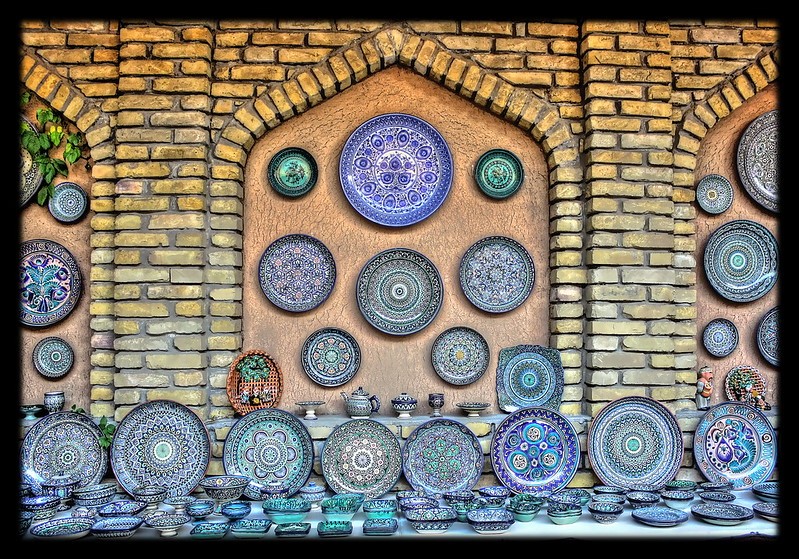
A smaller, lesser-known workshop by a ceramics master who’s one of the best in Uzbekistan. The master speaks English and will tour you around the place if he’s there.
Fergana
Fergana is a new city. Only founded in 1876, after the Russian conquest of the Kokand Khanate, the city’s initial name was Noviy (New) Margilan, then it changed its name to Skobelev, its first governor.
The name finally settled at Fergana (the valley gave the city the name) after the defeat of the Islamic bandits known as the Basmachi Movement, who opposed Russian conscription for WW1.
The city is a great example of Russian influence with its wide boulevards and Tsarist-era buildings. It feels more modern than the rest of the Fergana Valley. This means there are more options to stay and eat, as well as transport, but fewer attractions that are worth visiting.
Fergana Regional Museum of Local Lore
If there’s one place that’s worth your time in Fergana, it’s the Regional Museum of Local Lore. It’s one of the oldest museums in all of Uzbekistan founded in 1895.
Today it houses an extensive collection of ceramics, stamps, jewelry, embroidery, paintings, literature, and archeological findings.
Unfortunately, there’s little written in English for the museum’s exhibits. Still, the entrance fee is only 15000 UZS / 1.20 EUR and you can see everything in an hour.
Where to stay in the Fergana Valley
While Fergana offers the best central location in the Valley and good transport links, I feel you’d be missing out if you only stay in Fergana and do day trips. Instead, opt to stay in each city a night to get more of its spirit.
Traveling between cities is easy and fast, so you won’t be spending that much time traveling anyway.
Here are my recommendations:
Accommodation in Fergana City
The best place to stay in Fergana is hands down, no doubt, don’t even argue, Sakura Inn. The host Elsevar is knowledgeable and super friendly. The rooms are cozy and clean. If that’s not enough, there’s a cat on the property – Mr. Samson. You know how I am with cats…
Accommodation in Kokand
I stayed in Rohat Hotel. Initially, I thought it was a hostel, but it turns out there are no hostels in Kokand.
This hotel surprised me pleasantly, so I am recommending it with both hands!
Accommodation in Andijan
The best place to stay as a budget backpacker in Andijan is Hostel Eski Shahar. It’s cheap, it’s central and it’s cozy.
Accommodation in Margilan
I can only recommend one place and it’s Ikathouse. It’s a beautifully decorated, renovated house with a garden that exemplifies the Fergana Valley spirit and vibe.
Nothing else comes remotely close to this guesthouse in Margilan (maybe even the whole Valley).
Do note that they close for the winter months (Nov – Mar) like many other seasonal guesthouses.
Accommodation in Namangan
The only hostel in Namangan is the Sardoba Hostel. It’s in a central location and the staff is helpful with transport information.
What to Eat in the Fergana Valley
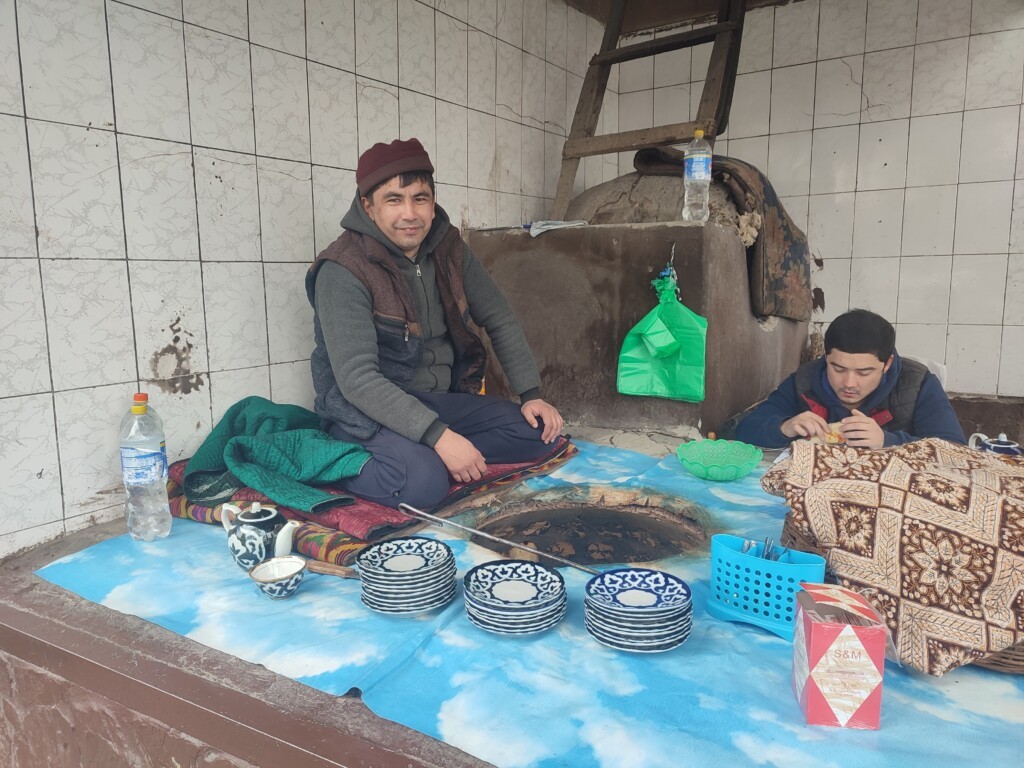



As a foodie, it’d be remiss of me not to include a food section in this guide. Here are a few foods to look out for and try while in the Fergana Valley
- Shashlik and kebab: meat skewers are ubiquitous in Uzbekistan. Enjoy on a stick or inside a piece of bread. You can find street vendors pretty much on every corner and half of the restaurants serve kebabs too.
- Plof (pilov/pilav/pilaf): It’s the staple rice dish in Uzbekistan. The National dish. Standard Plof uses basmati or long-grain rice and has carrots, onions, coriander, and lamb meat. There are many variations. You’ll find plof in any (literally any) establishment.
- Somsa: These hot pockets full of steaming vegetables and meat are a feast for the mouth. Look for street vendors sitting next to a huge stone or clay round oven with a long stick, who smack the raw dough on the walls, wait for it to bake, and masterfully detach it with the spatula again. Best enjoyed inside a chaikhana with a cup of green tea.
- Manti: Manti is the Central Asian variation of the dumpling. You can find them in all -stan countries, including Uzbekistan and the Fergana Valley.
- Lagman: A noodle soup. I’m not a big fan of this meal myself, but many other travelers love it. It’s usually a bunch of standard veggies and beef or lamb meat mixed with the noodles and some broth. In some variations, the noodles are fried and there’s no soup. It’s sold in many places.
- Shurpa: a hearty, thick stew made with lamb and vegetables.
- Dimlama: the vegetarian variation of Shurpa with minor other changes.
How to Get to the Fergana Valley
From Osh, Kyrgyzstan
I got into the Fergana Valley from Osh, Kyrgyzstan, and entered through the Dostuk Border Crossing.
From the New Bus Station in Osh (the one a bit out of town, you can get there by trolleybus #2. On Google Maps it says “Avtovogzal“) you can take a direct bus (#777) to Andijan for 150 KGS / 1.6 EUR. This is the cheapest and most convenient option.
Alternatively, from the Aztovogzal you can take a marshrutka #107 or #113 to the border (10 KGS / 0.1 EUR), cross it on foot, then take a shared taxi to Andijan for 20000 UZS / 1.6 EUR. You’ll have to wait for it to fill though, and also haggle about the price. It’s a hassle. If you can, take the direct bus 777.
From Khujand, Tajikistan
From Khujand, you must take a marshrutka to the border town of Konibodum (10 TJ / 0.8 EUR), then change to another one for the border (3 TJS / 0.25 EUR), then cross on foot, take an Uzbek marshrutka to Beshariq (5000 UZS / 0.4 EUR) and you’ll probably want to take another one to Kokand (10000 UZS / 0.8 EUR).
From Kokand, you can go anywhere in Uzbekistan by train, bus, or shared taxi.
From Tashkent
There is a daily train from Tashkent to Andijan calling at Kokand and Margilan. You can check the train timetable here.
Going by shared taxi is also possible, but the train is just so comfortable and cheap that I don’t think it’s worth it.
Alternatively, if you have money to spare, book this Fergana Valley Tour and they will take care of everything.
Flying in
Fergana has an international airport with the IATA code FEG.
As of May 2023, there are regular flights between Fergana and Moscow on Tuesdays, Thursdays, and Fridays with UTAir. Let’s be honest though: with the geopolitical situation at the moment, you’re probably not flying in from Moscow.
There are also 4 weekly flights to Istanbul (Monday, Wednesday, Saturday, and Sunday) on Turkish Airlines or Uzbekistan Airlines.
It’s usually much cheaper to fly into Tashkent though. Recently, WizzAir started flying the route Abu Dhabi – Samarkand at low prices.
Is Fergana Safe?
The short answer is yes.
Maybe you’ve heard of the Andijan Massacre from 2005. Uzbekistan was way different then. Now Islam Karimov is gone, the country is opening up to the world and economic growth is picking up. The Uzbek Fergana Valley is safe.
What’s giving Fergana Valley its bad reputation nowadays is the parts of it that are divided between Kyrgyzstan and Tajikistan. A third of their border is disputed and there are regular clashes displacing thousands of people, most recently in the fall of 2022 around Batken.
However, this turbulence happens outside of Uzbek borders and I am focusing on the Fergana Valley which is part of Uzbekistan. As such, and to reiterate for the third time, the region is pretty, foreigners are welcomed, people are friendly and the Fergana Valley is safe.
Visas
Uzbekistan very quickly opened up to the world after the death of Islam Karimov in 2016. In recent years, they have dropped the notoriously headache-inducing visa for most citizens of the world.
Most developed nations, including the EU (and all other European countries, except for Albania and North Macedonia), Canada, Australia, New Zealand, etc. can now visit Uzbekistan visa-free for up to 30 days.
The US is an exception, as no visa waiver is in place. Instead one can get an e-visa from the official portal.
Hotel Registration in Uzbekistan
Uzbekistan is pretty serious when it comes to knowing where its visitors are. It’s borderline dystopian and there are outlandish cases of travelers fined at the borders for not being able to prove where they were while in Uzbekistan.
During your stay in Uzbekistan, collect all the small pieces of paper the hotels give you when they register you. Most travelers are never asked for these, but in rare instances, not having them could be extremely problematic.
One or two nights without registration is permissible. If you’re taking an overnight train in Uzbekistan, you’ll have nights when you won’t be registered and that’s okay.
But more than three nights in a row and it’s an issue. A fellow backpacker had to go back to the border and re-enter Uzbekistan, as his Couchsurfing host forgot to register him. The police even fined her 300$ for failing to register him.
Make sure your hotel registers you, keep the receipt and you’ll be fine.
Best time of the year to visit
The best time to visit the Fergana Valley is during spring (April-June) when the weather is mild and pleasant with temperatures ranging from 20-25°C (68-77°F). During this time of year, flowers are blooming everywhere making it an ideal season for outdoor activities such as hiking and sightseeing.
Summer (July-August) can get hot with temperatures reaching up to 45°C (113°F), which may not be comfortable if you are not used to hot climates.
Autumn (September-November) is also a good season to visit the Fergana Valley as the weather becomes cooler and more comfortable for outdoor activities. During this time of year, the valley is abundant with fresh fruits (a lot of persimmons, that’s for sure) and vegetables that you can taste at local markets.
I was in the Fergana Valley in the middle of November and it was starting to get chilly. During the day I could go with just a hoodie, but I’d need my jacket on after sunset.
Winter (December-March) can be quite harsh with temperatures dropping below freezing point.
Parting words
With Uzbekistan opening up and mass tourism becoming a thing, most tourists focus on the magnificent cities of Samarkand, Bukhara, and Khiva. But we here aren’t tourists, we are travelers! And a true traveler would visit the Fergana Valley!
Traveling in the Fergana Valley feels like you’re uncovering something concealed. It’s there, it’s been there for millennia, but it’s not common knowledge, it’s not mainstream yet. That’s the charm of the Fergana Valley.
Cities like Kokand, Namangan, and Andijon will treat you with fabulous mosques and madrasahs, intricately engraved and decorated.
Cities like Margilon and Rishton will show you the source of livelihood for these people for the past 1000 years – silk and pottery.
All around the Fergana Valley, you will feel welcome by the friendly local Uzbeks, and your belly full with their hearty, flavorful meals.
Visit the Fergana Valley!


